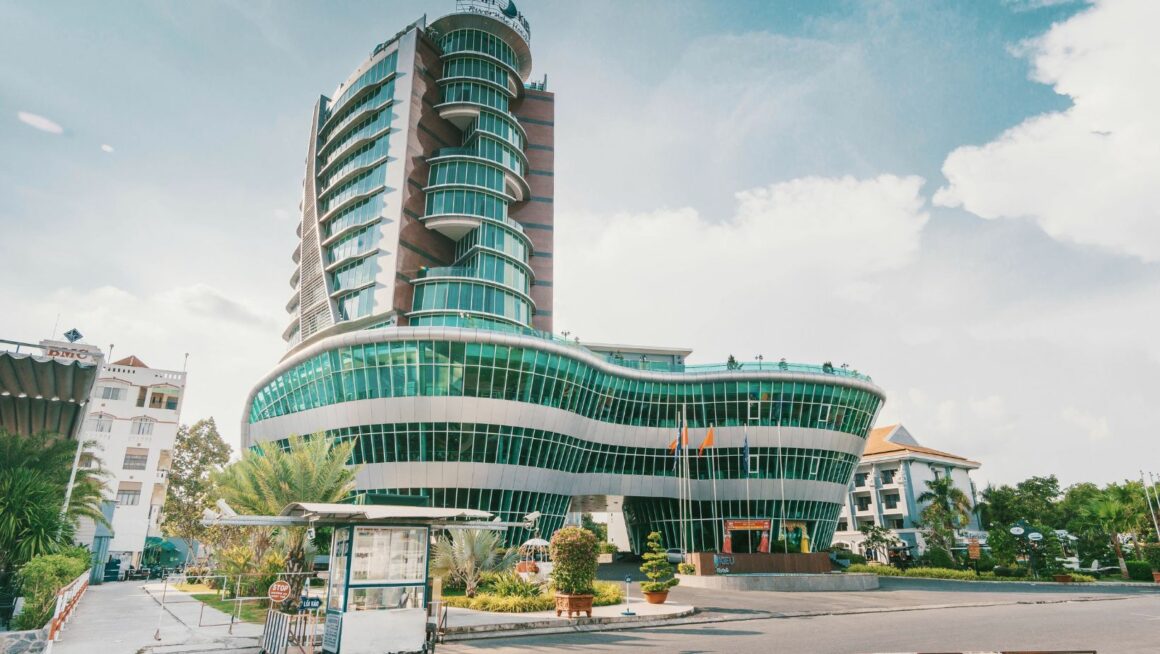As the world increasingly focuses on sustainability, green building techniques are gaining prominence, reshaping how structures are designed, constructed, and maintained. These eco-friendly practices not only reduce the environmental impact of buildings but also offer significant economic and health benefits, making them a crucial consideration in modern construction projects.
Green Building Techniques
Sustainable Materials in Green Construction
Sustainable materials often sit at the core of green construction, offering a reduction in environmental impact and enhancing building efficiency. They provide crucial support in achieving sustainability goals.
Recycled and Reclaimed Materials
 Recycled and reclaimed materials represent a hallmark of eco-friendly construction. Builders use materials such as recycled steel and reclaimed wood, which not only reduce waste but also decrease the demand for virgin resources. For instance, recycled steel reduces energy consumption by up to 60% compared to new steel production, making it a preferred choice in sustainable building projects. Similarly, reclaimed wood not only adds aesthetic value but also minimizes the need for new timber harvesting. Incorporating these materials diverts waste from landfills and reduces the emissions associated with new material production.
Recycled and reclaimed materials represent a hallmark of eco-friendly construction. Builders use materials such as recycled steel and reclaimed wood, which not only reduce waste but also decrease the demand for virgin resources. For instance, recycled steel reduces energy consumption by up to 60% compared to new steel production, making it a preferred choice in sustainable building projects. Similarly, reclaimed wood not only adds aesthetic value but also minimizes the need for new timber harvesting. Incorporating these materials diverts waste from landfills and reduces the emissions associated with new material production.
Natural and Renewable Resources
 Utilizing natural and renewable resources is essential for minimizing the carbon footprint of construction projects. Materials like bamboo, cork, and linoleum are popular due to their renewable qualities. Bamboo grows rapidly, maturing in just three to five years, making it an excellent alternative to traditional hardwoods that can take decades to reach maturity. Cork, harvested from the bark of cork oak trees without harming the tree, provides a sustainable option for flooring and insulation. Linoleum, made from natural materials including linseed oil, pine rosin, and wood flour, offers a durable and biodegradable solution for eco-friendly flooring. These materials not only support environmental sustainability but also ensure that resources are replenished over time, securing a sustainable cycle of material use.
Utilizing natural and renewable resources is essential for minimizing the carbon footprint of construction projects. Materials like bamboo, cork, and linoleum are popular due to their renewable qualities. Bamboo grows rapidly, maturing in just three to five years, making it an excellent alternative to traditional hardwoods that can take decades to reach maturity. Cork, harvested from the bark of cork oak trees without harming the tree, provides a sustainable option for flooring and insulation. Linoleum, made from natural materials including linseed oil, pine rosin, and wood flour, offers a durable and biodegradable solution for eco-friendly flooring. These materials not only support environmental sustainability but also ensure that resources are replenished over time, securing a sustainable cycle of material use.
Energy Efficiency and Green Buildings
Energy efficiency stands at the core of green building techniques, promoting reduced dependency on non-renewable energy sources and enhancing sustainability. This section explores specific innovations like solar panels and green insulation that significantly contribute to energy conservation in buildings.
Solar Panels and Passive Solar Heating
 Solar panels are a key element in green buildings, converting sunlight directly into electricity without pollution or emissions. They reduce electricity costs and decrease a building’s carbon footprint. For example, installing photovoltaic panels can save thousands of kilowatt-hours each year. Alongside active solar panels, passive solar heating uses the building’s orientation, window placement, and materials to naturally regulate temperatures, minimizing the reliance on heating and cooling systems. Buildings designed with passive solar heating incorporate large, south-facing windows that absorb heat during winter months, while overhangs and shading devices prevent overheating in the summer.
Solar panels are a key element in green buildings, converting sunlight directly into electricity without pollution or emissions. They reduce electricity costs and decrease a building’s carbon footprint. For example, installing photovoltaic panels can save thousands of kilowatt-hours each year. Alongside active solar panels, passive solar heating uses the building’s orientation, window placement, and materials to naturally regulate temperatures, minimizing the reliance on heating and cooling systems. Buildings designed with passive solar heating incorporate large, south-facing windows that absorb heat during winter months, while overhangs and shading devices prevent overheating in the summer.
Green Insulation Options
Insulation in green buildings focuses on using materials that are sustainable, reduce energy waste, and minimize environmental impact. Options such as cellulose, wool, and recycled denim provide effective thermal retention while supporting eco-friendly construction practices. Cellulose insulation, made from recycled paper treated with fire retardant, offers a low-impact alternative that reduces energy costs effectively.
Innovations in Green Building
 Green building techniques are more than just a trend; they’re a crucial pivot towards sustainable construction that benefits both the planet and its inhabitants. By integrating strategies like high-efficiency windows, solar panels, and sustainable materials, builders and renovators can dramatically reduce environmental impact and improve the quality of life for building occupants. These innovations not only conserve resources but also pave the way for a future where construction is in harmony with the environment.
Green building techniques are more than just a trend; they’re a crucial pivot towards sustainable construction that benefits both the planet and its inhabitants. By integrating strategies like high-efficiency windows, solar panels, and sustainable materials, builders and renovators can dramatically reduce environmental impact and improve the quality of life for building occupants. These innovations not only conserve resources but also pave the way for a future where construction is in harmony with the environment.
The adoption of these eco-friendly practices is essential for promoting sustainability in the construction industry. It’s not just about reducing the carbon footprint but also about setting new standards that can lead to widespread change. As more individuals and businesses recognize the importance of green building, the industry will continue to evolve, making eco-friendly construction the norm rather than the exception.
Embracing green building techniques is a step forward in building a sustainable future. It’s a commitment that offers substantial benefits today and promises a healthier planet for generations to come.

